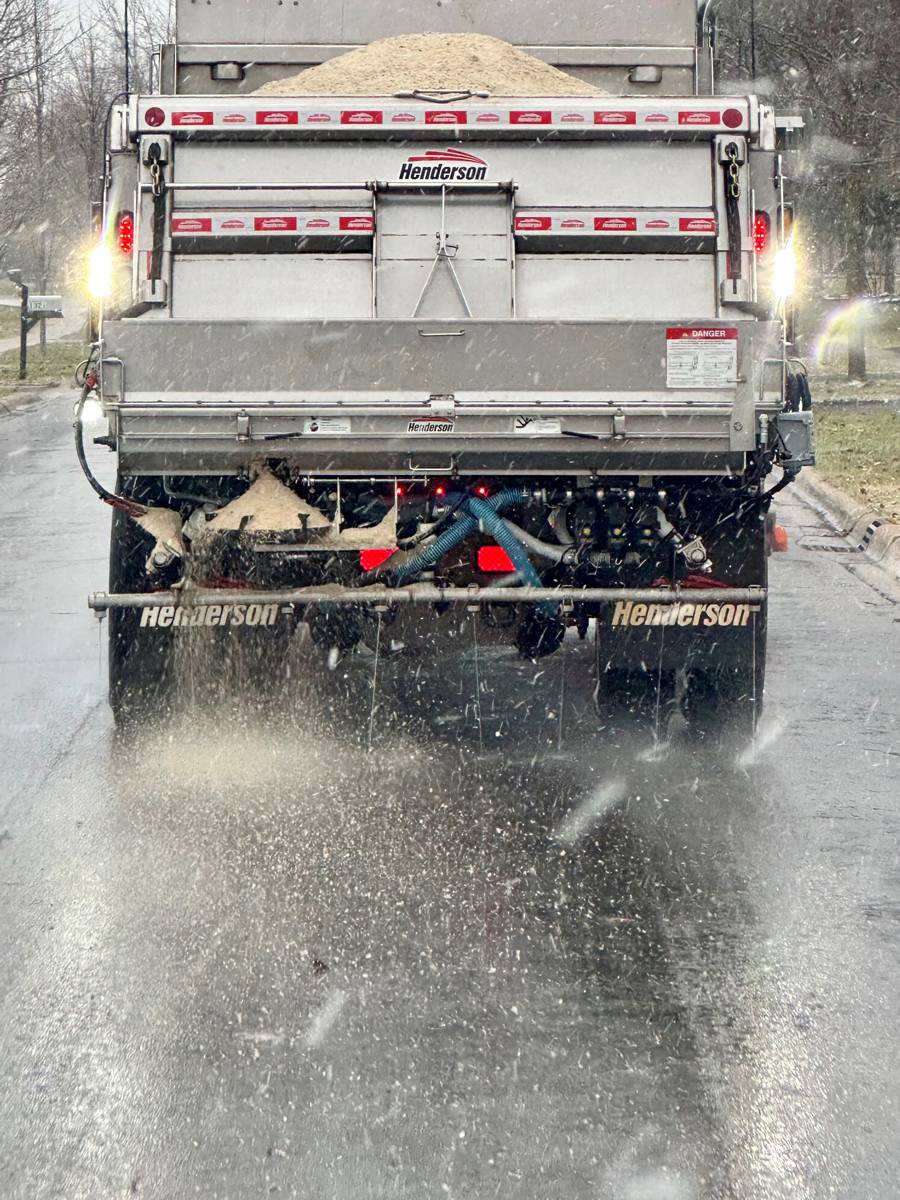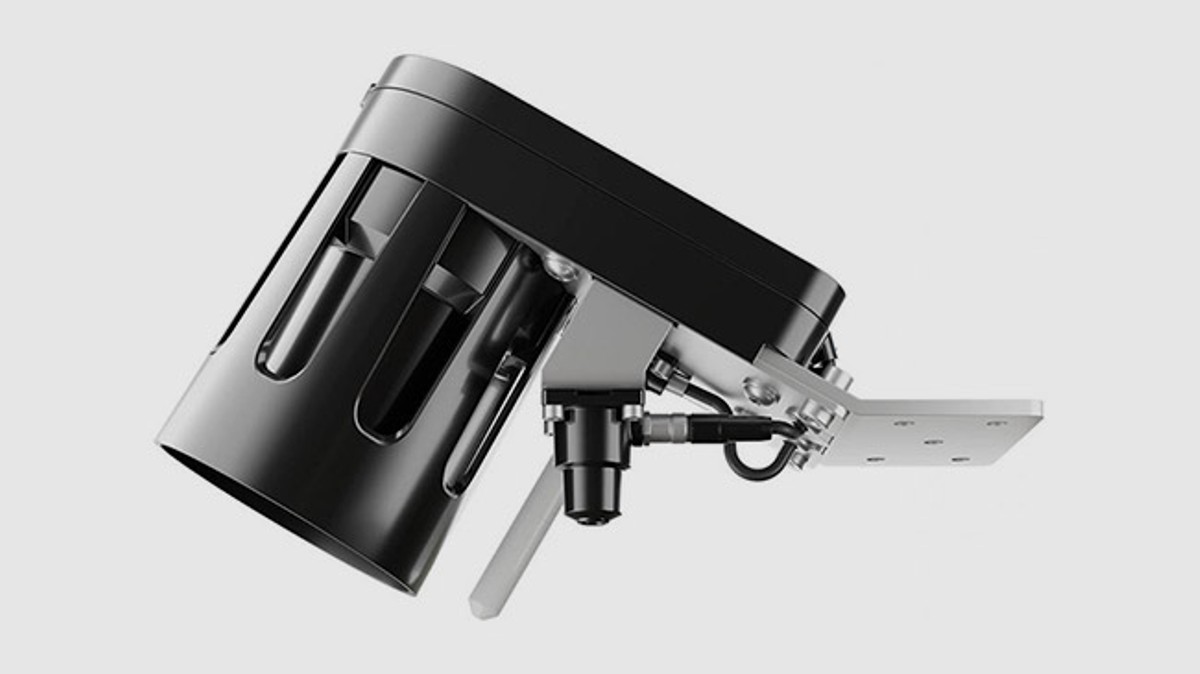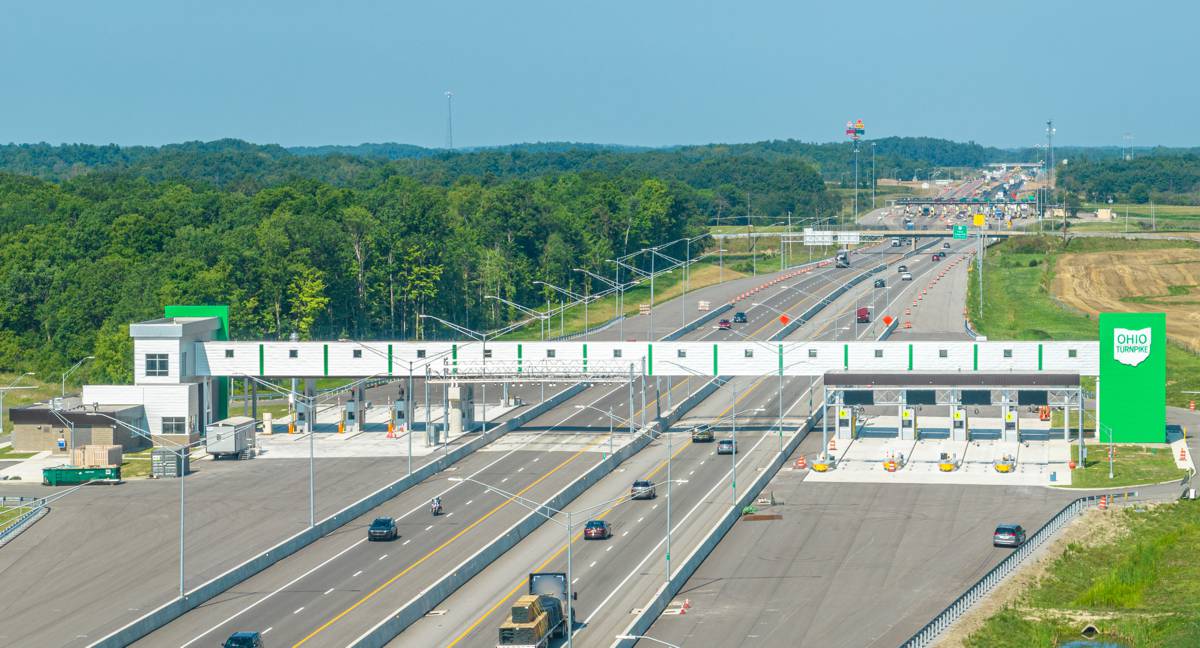Dynamic Spreading to optimizing Road Safety, Sustainability and Savings
When winter weather strikes, road safety takes priority. If not properly treated, icy, snow-covered roads create conditions ripe for increased traffic accidents, injuries and fatalities. The impact extends beyond individual safety, negatively impacting traffic flow, emergency response times and economic productivity, with snow and ice removal costing the United States billions of dollars annually.
But salt overuse has considerable environmental consequences, too. On American roads and highways, where nearly 20% of all weather-related crashes occur during snow or sleet, 13% on icy pavement and 16% on snowy or slushy pavement, balancing community safety and long-term sustainability requires forward-thinking solutions. But far too many road authorities strictly rely on predefined treatments or their drivers to change application rates based on what they see — or expect to see — on the roadway.
As new technologies advance and best salt usage practices evolve, dynamic spreading — the combination of vehicle-mounted sensor data and computerized dispensing — can safeguard lives while maintaining transportation network efficiency in a more environmentally friendly manner.
Balancing Safety and Environmental Concerns
While road users have come to expect a high level of winter road service — encouraging overapplication of road salt and other abrasives — the following substantial environmental impacts of salt treatment must be considered:
- Rising chloride levels in groundwater.
- Impossible to remove from water.
- Damage to plants and aquatic life.
- Corrosion of roads and infrastructure.
Consequently, departments of transportation, cities, counties and other authorities need solutions to optimize salt application without compromising safety. Enter dynamic spreading.

Dynamic Spreading to Assist in Limiting Road Salt Use
Since the 1970s, we’ve spent time researching, documenting and improving how to sustainably maintain ice-free roads given salt’s detrimental impact.
Weather, pavement temperature and cycle times impact how much material is required, so simple practices like properly calibrating equipment and operator training help measure the exact amount of material applied, facilitating more accurate and efficient de-icing — with less salt. More advanced methods include prewetting salt and anti-icing treatments before storms and using alternative materials in frigid temperatures to reduce the environmental impact by minimizing spray, kick-up and salt application.
But every storm is different, so treating storms identically inevitably leads to inefficiency, over- and undersalting, wasted time, etc.
Fortunately, the treatment application process has evolved from simple two-knob spinner and auger settings to a computerized dispensing system that complements human snowplough operators. Calibrating trucks to ensure the settings match your targeted treatment amount according to current conditions remains critical for proper distribution, but integrating onboard computers and real-time road weather data provides a complete picture for smart treatment and dynamic spreading decisions.
Every agency has unique circumstances and adjusts its treatment recommendations to particular service levels, logistics and other factors like traffic volume. However, some authorities span large geographic areas, where weather conditions may differ from one end of the road network to the other.
Sure, some organizations allow operators to make decisions along the route. However, objectively understanding variability in road conditions across large networks is difficult without accurate measurement tools. The combination of reliable road weather measurements from mobile sensors and drivers seeing road conditions in critical areas empowers winter road maintenance organizations to adjust application rates and avoid wasting material.
Mobile data, delivered from units mounted on snowploughs to the vehicle cab, provides the operator real-time road weather information that allows them to adjust treatments based on actual conditions rather than relying on past protocol. To deliver a comprehensive picture, experts at Vaisala — a global leader in weather, environmental and industrial measurements — collaborated with several road industry professionals to create a flexible treatment matrix incorporating friction, road conditions and pavement temperature trends with real-time weather information to provide material and amount guidance. Based on a two-hour cycle time, using prewetted salt, this treatment suggestion removes the subjectivity so operators can optimize material distribution amidst constantly changing road conditions.
Dynamic spreading takes this to a new level. Data from the mobile road sensor integrates into the computerized dispensing system and material is dispensed at a predetermined rate based on road friction. “Predetermined rates” are agency-specific but guided by the treatment matrix and meant to meet an agency’s individual needs. This innovative approach eliminates the need for the operator to adjust the rate amount during an event, boosting winter road maintenance efficiency by reducing overtreatment and allowing operators to concentrate on vehicle operation.

The Future of Road Material Application
With rising environmental awareness, winter maintenance organizations need innovative solutions like dynamic spreading to balance road safety with sustainable practices. By augmenting the decision-making capabilities of snowplough operators, dynamic spreading technology helps reduce the impacts of oversalting without compromising safety or service. Integrating real-time mobile data provides continuous, data-driven guidance to optimize spread rates, removing the guesswork — even for experienced personnel.
No more overapplication “just to be safe” or underapplication due to limited visibility. Dynamic spreading determines the optimal treatment for each location based on real-time information, empowering agencies to maximize resources while minimizing environmental impacts.

Article by Bert Murillo and Mark DeVries:
Mark DeVries is a Business Application Manager at Vaisala, Mark applies his winter maintenance and chemical use expertise to help clients/agencies improve operations and solve problems. Prior to joining the Vaisala team, Mark was with McHenry County Division of Transportation for 30 years where he served as Maintenance Superintendent. A frequent industry author and speaker, Mark has been featured at snow/ice, environmental, and municipality seminars across the globe and is also a member or committee participant for numerous industry organizations including APWA, AASHTO, and the Transportation Research Board (TRB). Among other awards, Mark is honoured to be a past recipient of the APWA Presidential Leadership Award.
Bert Murillo is the Head of Sales for Vaisala’s North American Roads division, which focuses on empowering roadway and runway decision-makers to address the impact of weather on safety and operational efficiency. Based in San Antonio, Texas, Bert’s experience covers more than 15 years in the Intelligent Transportation Systems (ITS) industry. He speaks at industry conferences throughout North America on how weather observation and forecast tools can help agencies solve real challenges.














